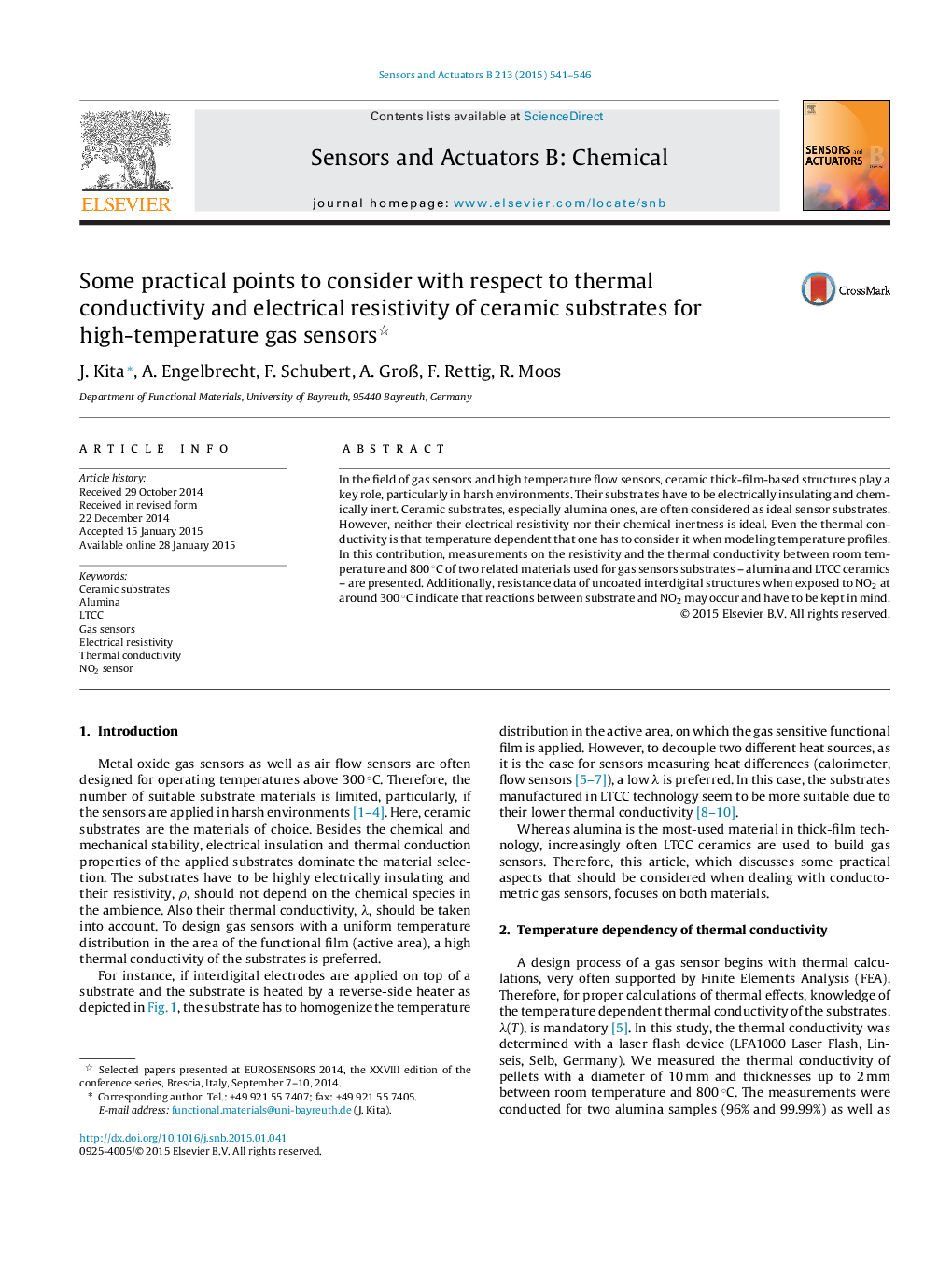| کد مقاله | کد نشریه | سال انتشار | مقاله انگلیسی | نسخه تمام متن |
|---|---|---|---|---|
| 750703 | 1462078 | 2015 | 6 صفحه PDF | دانلود رایگان |
• Both alumina and LTCC substrates cannot be considered as ideal electrical insulators.
• The resistivity of alumina substrates and of LTCC is strongly temperature dependent.
• The resistivity of alumina substrates may get affected if NO2 is in the ambience.
• The thermal conductivity of alumina decreases strongly with temperature.
• The thermal conductivity of LTCC decreases remains constant at lower values.
In the field of gas sensors and high temperature flow sensors, ceramic thick-film-based structures play a key role, particularly in harsh environments. Their substrates have to be electrically insulating and chemically inert. Ceramic substrates, especially alumina ones, are often considered as ideal sensor substrates. However, neither their electrical resistivity nor their chemical inertness is ideal. Even the thermal conductivity is that temperature dependent that one has to consider it when modeling temperature profiles. In this contribution, measurements on the resistivity and the thermal conductivity between room temperature and 800 °C of two related materials used for gas sensors substrates – alumina and LTCC ceramics – are presented. Additionally, resistance data of uncoated interdigital structures when exposed to NO2 at around 300 °C indicate that reactions between substrate and NO2 may occur and have to be kept in mind.
Journal: Sensors and Actuators B: Chemical - Volume 213, 5 July 2015, Pages 541–546
